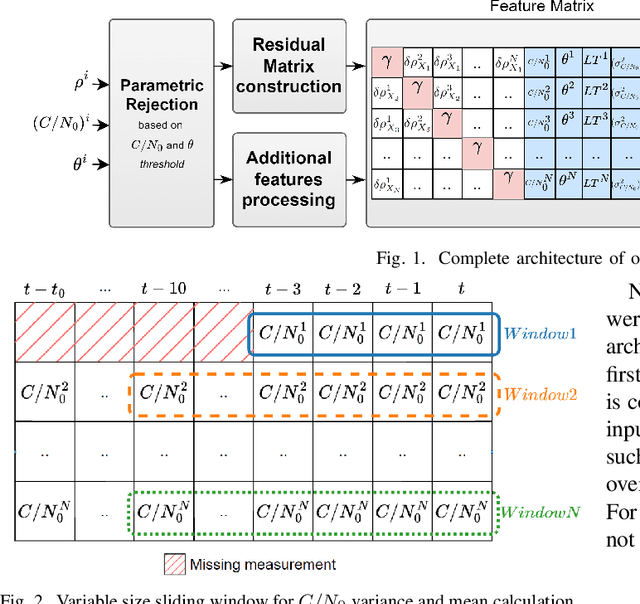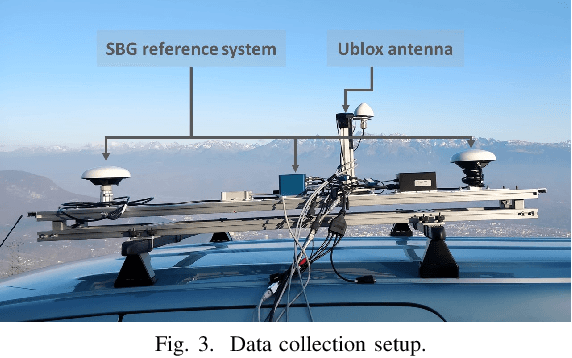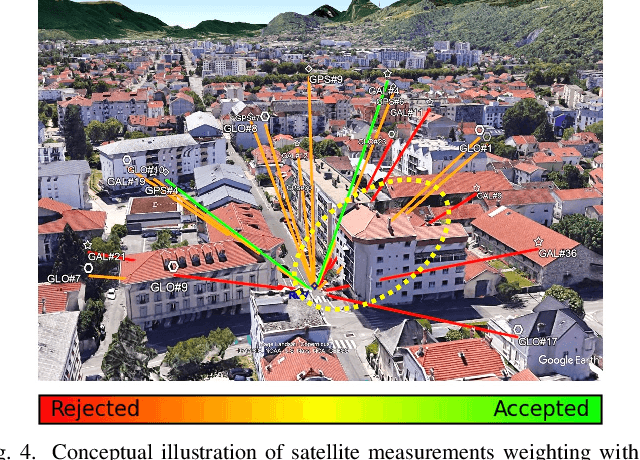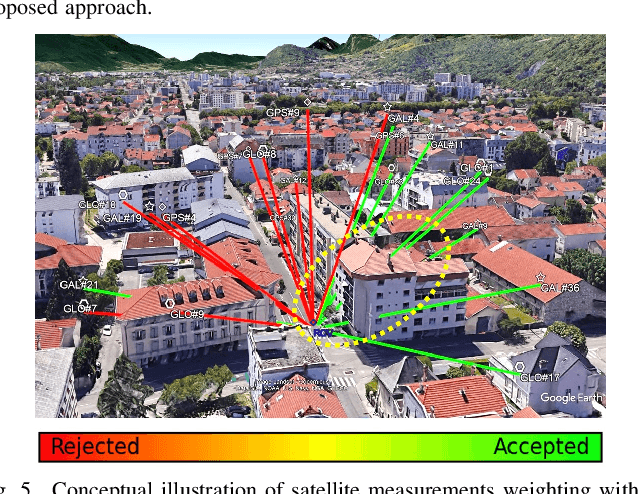Ibrahim Sbeity
ETIS, CEA-LETI
A Novel Satellite Selection Algorithm Using LSTM Neural Networks For Single-epoch Localization
Jun 09, 2023



Abstract:This work presents a new approach for detection and exclusion (or de-weighting) of pseudo-range measurements from the Global Navigation Satellite System (GNSS) in order to improve the accuracy of single-epoch positioning, which is an essential prerequisite for maintaining good navigation performance in challenging operating contexts (e.g., under Non-Line of Sight and/or multipath propagation). Beyond the usual preliminary hard decision stage, which can mainly reject obvious outliers, our approach exploits machine learning to optimize the relative contributions from all available satellites feeding the positioning solver. For this, we construct a customized matrix of pseudorange residuals that is used as an input to the proposed longshort term memory neural network (LSTM NN) architecture. The latter is trained to predict several quality indicators that roughly approximate the standard deviations of pseudo-range errors, which are further integrated in the calculation of weights. Our numerical evaluations on both synthetic and real data show that the proposed solution is able to outperform conventional weighting and signal selection strategies from the state-of-theart, while fairly approaching optimal positioning accuracy.
* arXiv admin note: text overlap with arXiv:2306.05319
RNN-Based GNSS Positioning using Satellite Measurement Features and Pseudorange Residuals
Jun 08, 2023



Abstract:In the Global Navigation Satellite System (GNSS) context, the growing number of available satellites has lead to many challenges when it comes to choosing the most accurate pseudorange contributions, given the strong impact of biased measurements on positioning accuracy, particularly in single-epoch scenarios. This work leverages the potential of machine learning in predicting link-wise measurement quality factors and, hence, optimize measurement weighting. For this purpose, we use a customized matrix composed of heterogeneous features such as conditional pseudorange residuals and per-link satellite metrics (e.g., carrier-to-noise power density ratio and its empirical statistics, satellite elevation, carrier phase lock time). This matrix is then fed as an input to a recurrent neural network (RNN) (i.e., a long-short term memory (LSTM) network). Our experimental results on real data, obtained from extensive field measurements, demonstrate the high potential of our proposed solution being able to outperform traditional measurements weighting and selection strategies from state-of-the-art.
 Add to Chrome
Add to Chrome Add to Firefox
Add to Firefox Add to Edge
Add to Edge